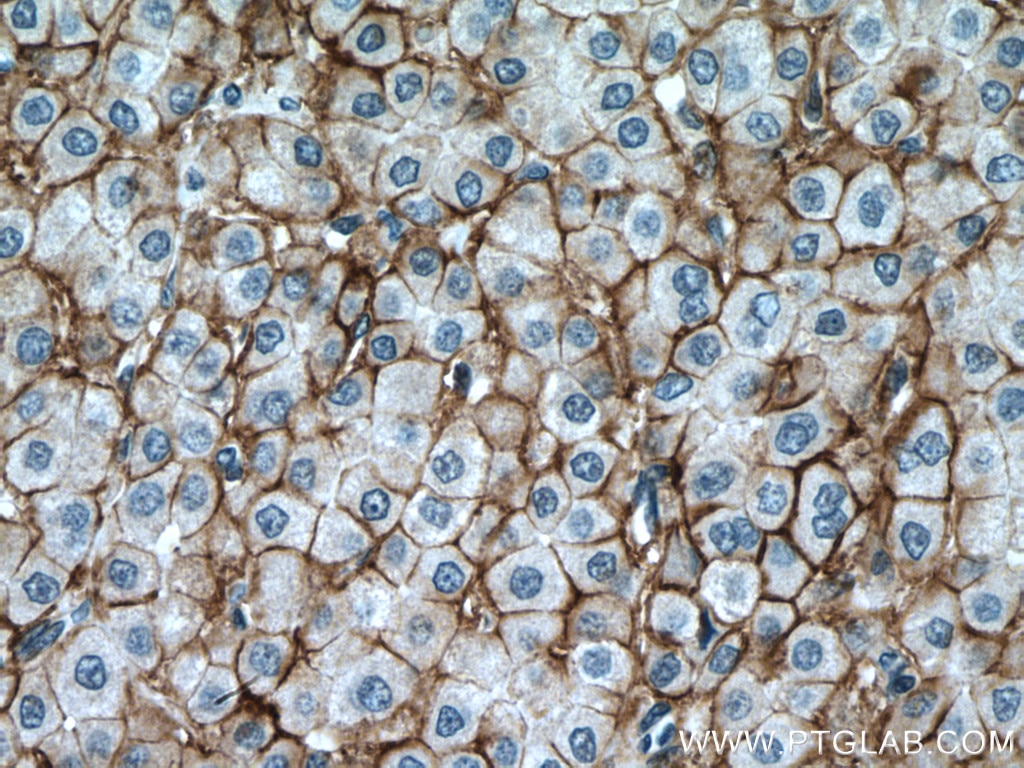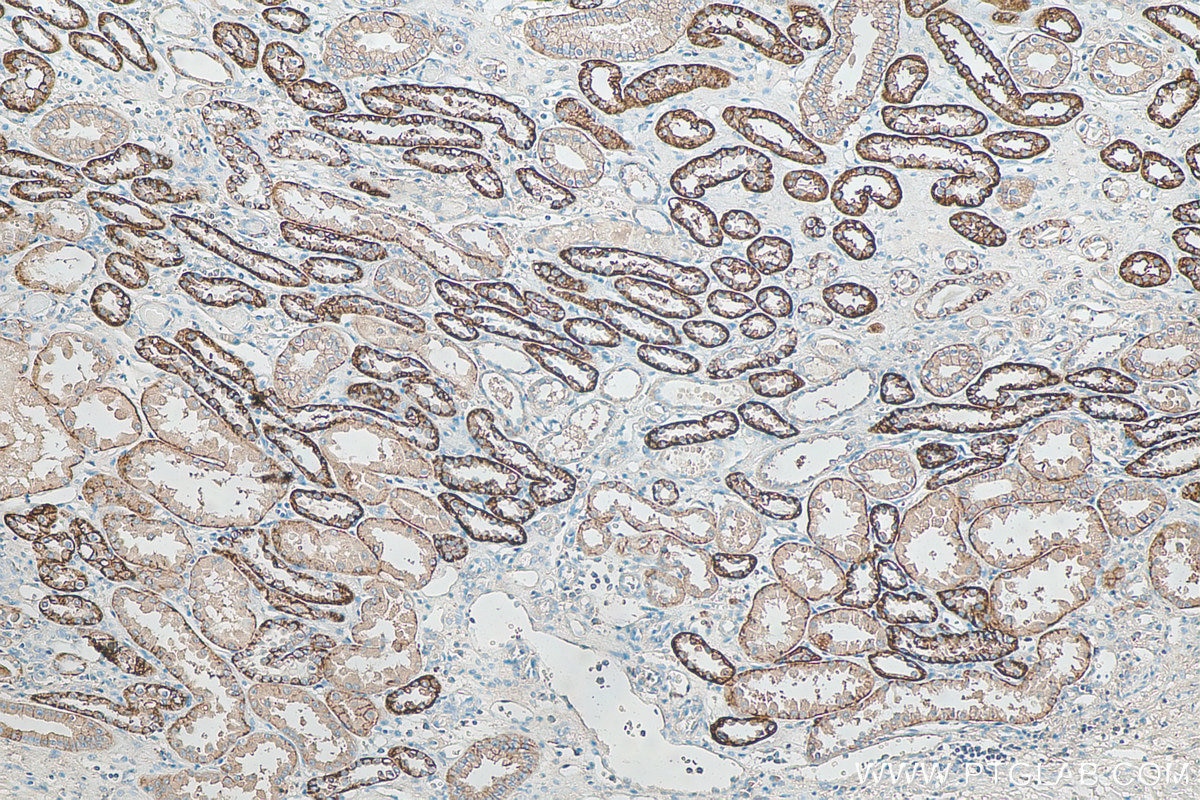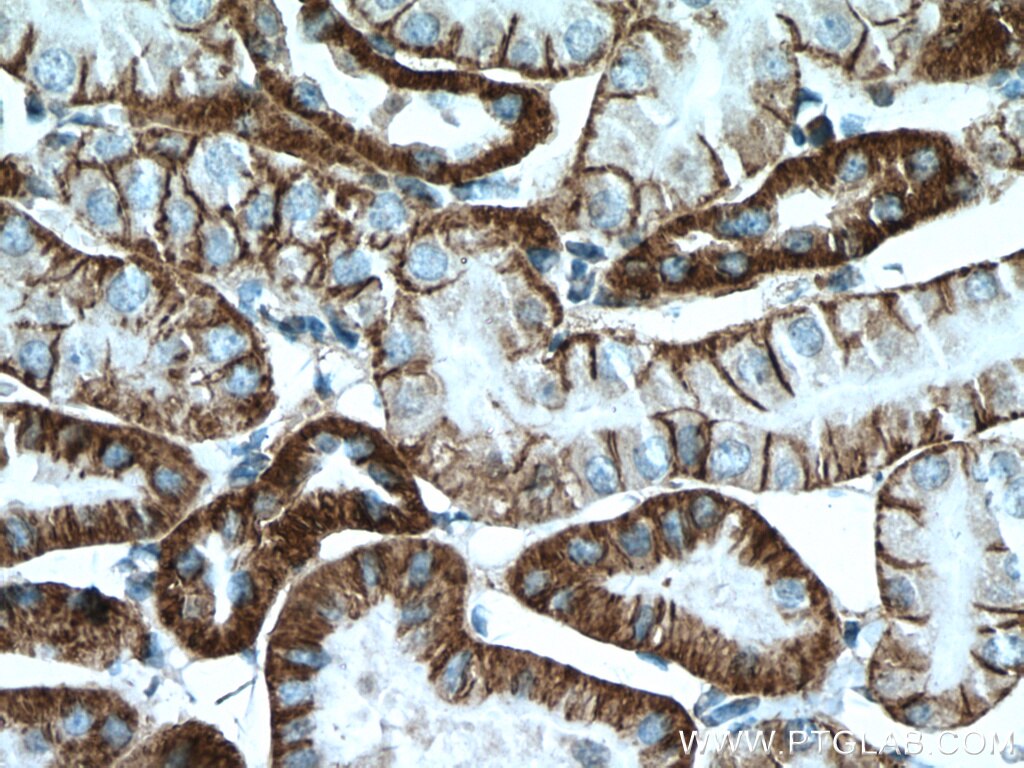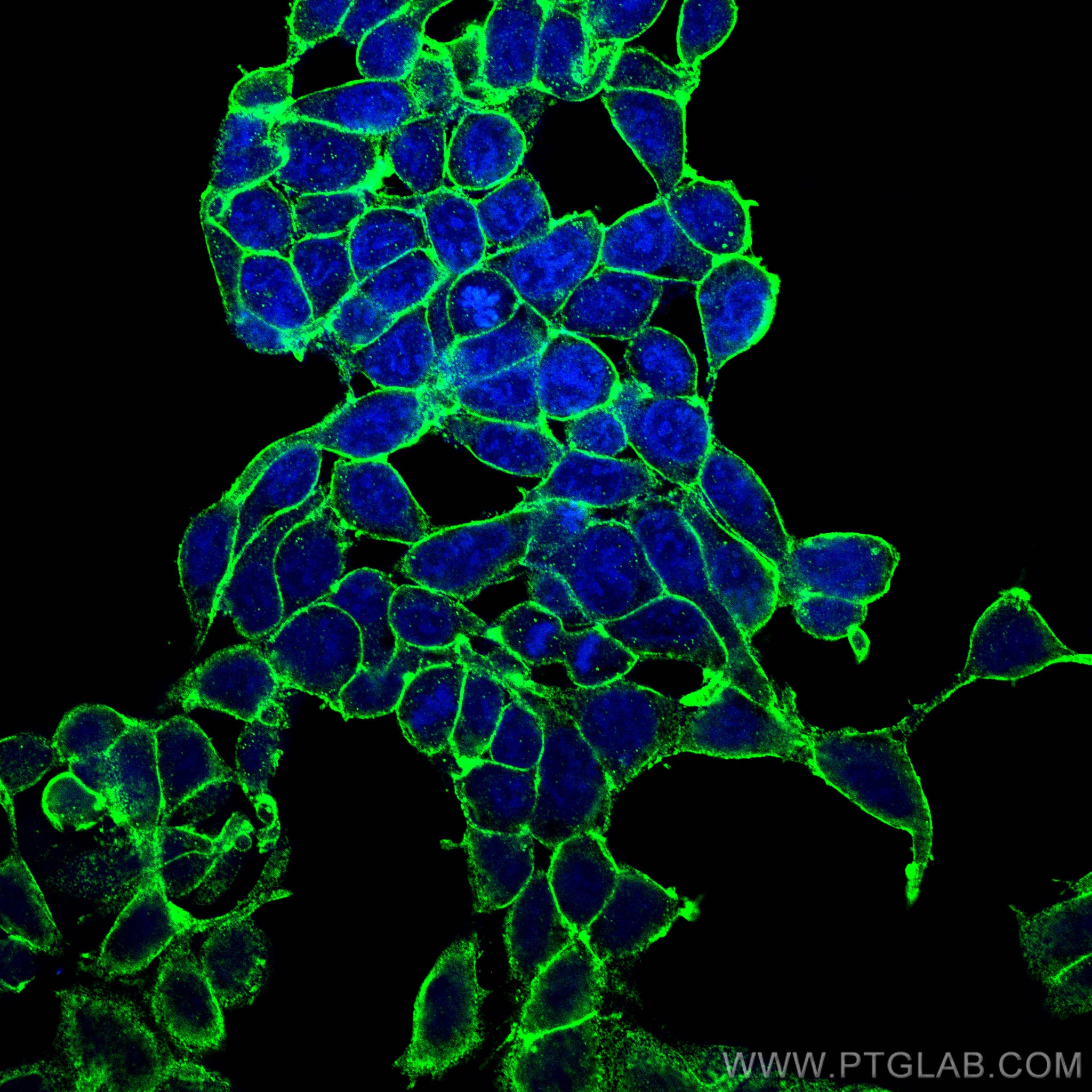- Phare
- Validé par KD/KO
Anticorps Polyclonal de lapin anti-ATP1A1-Specific
ATP1A1-Specific Polyclonal Antibody for FC, IF, IHC, WB, ELISA
Hôte / Isotype
Lapin / IgG
Réactivité testée
Humain, souris et plus (1)
Applications
WB, IHC, IF, FC, ELISA
Conjugaison
Non conjugué
N° de cat : 55187-1-AP
Synonymes
"ATP1A1-Specific Antibodies" Comparison
View side-by-side comparison of ATP1A1-Specific antibodies from other vendors to find the one that best suits your research needs.
Applications testées
| Résultats positifs en WB | cellules HEK-293, cellules HepG2, cellules MCF-7, cellules Neuro-2a, tissu cardiaque de souris |
| Résultats positifs en IHC | tissu de cancer du foie humain, tissu rénal de souris, tissu rénal humain il est suggéré de démasquer l'antigène avec un tampon de TE buffer pH 9.0; (*) À défaut, 'le démasquage de l'antigène peut être 'effectué avec un tampon citrate pH 6,0. |
| Résultats positifs en IF | cellules HEK-293, cellules Caco-2 |
| Résultats positifs en cytométrie | cellules HEK-293 |
Dilution recommandée
| Application | Dilution |
|---|---|
| Western Blot (WB) | WB : 1:1000-1:8000 |
| Immunohistochimie (IHC) | IHC : 1:50-1:500 |
| Immunofluorescence (IF) | IF : 1:500-1:2000 |
| Flow Cytometry (FC) | FC : 0.20 ug per 10^6 cells in a 100 µl suspension |
| It is recommended that this reagent should be titrated in each testing system to obtain optimal results. | |
| Sample-dependent, check data in validation data gallery | |
Applications publiées
| WB | See 9 publications below |
| IF | See 3 publications below |
Informations sur le produit
55187-1-AP cible ATP1A1-Specific dans les applications de WB, IHC, IF, FC, ELISA et montre une réactivité avec des échantillons Humain, souris
| Réactivité | Humain, souris |
| Réactivité citée | rat, Humain, souris |
| Hôte / Isotype | Lapin / IgG |
| Clonalité | Polyclonal |
| Type | Anticorps |
| Immunogène | Peptide |
| Nom complet | ATPase, Na+/K+ transporting, alpha 1 polypeptide |
| Masse moléculaire calculée | 113 kDa |
| Poids moléculaire observé | 100-110 kDa |
| Numéro d’acquisition GenBank | NM_000701 |
| Symbole du gène | ATP1A1 |
| Identification du gène (NCBI) | 476 |
| Conjugaison | Non conjugué |
| Forme | Liquide |
| Méthode de purification | Purification par affinité contre l'antigène |
| Tampon de stockage | PBS avec azoture de sodium à 0,02 % et glycérol à 50 % pH 7,3 |
| Conditions de stockage | Stocker à -20°C. Stable pendant un an après l'expédition. L'aliquotage n'est pas nécessaire pour le stockage à -20oC Les 20ul contiennent 0,1% de BSA. |
Informations générales
ATP1A1 is the catalytic component of Na+/K+-ATPase which is a membrane bound enzyme primarily involved in generation of Na+ and K+ gradients across plasma membranes and in determination of cytoplasmic Na+ levels. ATP1A1 is a ubiquitously expressed membrane protein and often used as the marker or internal control for plasma membrane protein. This antibody is specific to ATP1A1.
Protocole
| Product Specific Protocols | |
|---|---|
| WB protocol for ATP1A1-Specific antibody 55187-1-AP | Download protocol |
| IHC protocol for ATP1A1-Specific antibody 55187-1-AP | Download protocol |
| IF protocol for ATP1A1-Specific antibody 55187-1-AP | Download protocol |
| FC protocol for ATP1A1-Specific antibody 55187-1-AP | Download protocol |
| Standard Protocols | |
|---|---|
| Click here to view our Standard Protocols |
Publications
| Species | Application | Title |
|---|---|---|
Autophagy Hepatocyte CD36 modulates UBQLN1-mediated proteasomal degradation of autophagic SNARE proteins contributing to septic liver injury | ||
Hypertension Renal Natriuretic Peptide Receptor-C Deficiency Attenuates NaCl Cotransporter Activity in Angiotensin II-Induced Hypertension. | ||
Sci Rep Fluorescence- and magnetic-activated cell sorting strategies to separate spermatozoa involving plural contributors from biological mixtures for human identification. | ||
PLoS One A Novel Bufalin Derivative Exhibited Stronger Apoptosis-Inducing Effect than Bufalin in A549 Lung Cancer Cells and Lower Acute Toxicity in Mice. | ||
Exp Eye Res CHIR99021 balance TGFβ1 induced human corneal endothelial-to-mesenchymal transition to favor corneal endothelial cell proliferation. |




















